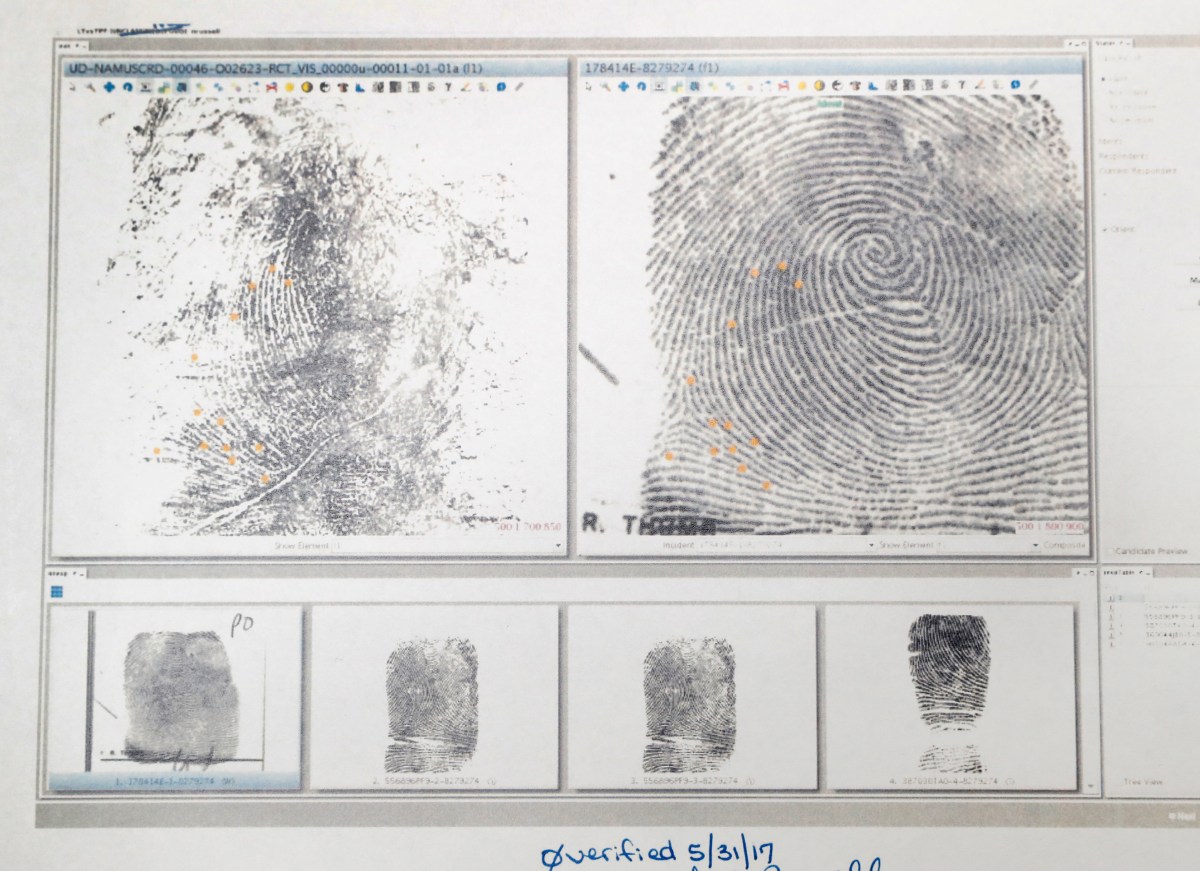Until recently, New York City police secretly kept fingerprints of children arrested as juveniles on file permanently in a department database — an illegal practice that has raised alarms about the lengths the nation’s largest police force has taken to keep tabs on the city’s youth.
The public defender organization that uncovered the yearslong practice pressured the New York Police Department to acknowledge it and then threatened legal action to make it stop, citing a state law barring local police from stockpiling juveniles’ fingerprints.
Now, after years of discussions, the NYPD said Wednesday it has purged all juvenile fingerprints records from the database and will no longer keep them indefinitely. It has also issued bulletins to its 36,000 officers advising them of procedural changes meant to ensure compliance with the law.
The Legal Aid Society said the database contained the fingerprints of tens of thousands of youth.
“This illegal database has existed for years, infringing on young New Yorkers’ rights, in clear violation of the law,” said Dawne Mitchell, the attorney-in-charge of the Legal Aid Society’s juvenile rights practice.
The organization called on city lawmakers to hold an immediate hearing on the police department’s use of surveillance and data collection technology. It also wants a law passed to give the public more oversight over such tools.
Beside the fingerprint database, the Legal Aid Society’s lawyer representing juvenile and adult defendants say they’re also concerned about police use of facial recognition and DNA collection, as well as its database of suspected gang members.
In recent years, the state has broadened the definition of who qualifies as a juvenile, taking most charged 16-and-17-year-olds out of the adult criminal justice system.
Under what’s known as Raise the Age legislation, people under 18 charged with misdemeanors will have their cases tried in family court, while nonviolent felonies start in a new criminal court section for youths before moving to family court in most cases.
As for fingerprints, state law requires that local police destroy its records of a juvenile’s fingerprints after sending them to a statewide repository at the state’s Division of Criminal Justice Services.
“The NYPD can confirm that the department destroys juvenile delinquent fingerprints after the prints have been transmitted to DCJS,” department spokeswoman Devora Kaye said.
The aid society said it discovered the NYPD’s was hoarding juvenile fingerprint records in 2014 after a prosecutor admitted that a child’s arrest was based on fingerprints kept in the police department’s database. Yet, about a year later, the NYPD denied it was retaining juvenile fingerprints.
In 2016, criminal justice services intervened and instructed the police department that it was required to destroy arrest-related documents for a number of juveniles. In response, the NYPD acknowledged that it had retained not only arrest-related records for juveniles, but fingerprints as well.
Nevertheless, the practice continued. Last year, the Legal Aid Society sent a letter to the police department, threatening a lawsuit “to enforce the statutory rights of individuals arrested and fingerprinted as juvenile delinquents.”
— By Michael R. Sisak, Associated Press





































